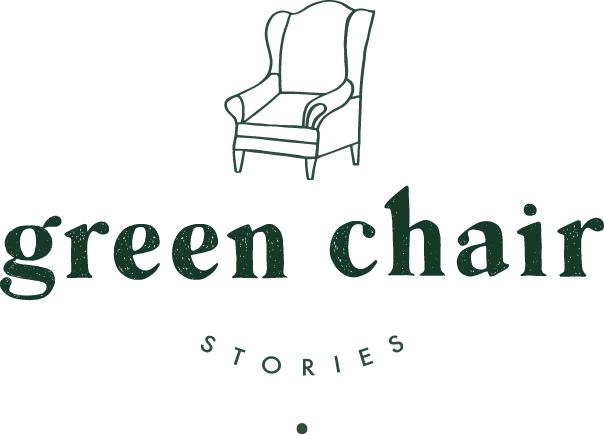The Ultimate Guide to an Irresistible Homepage
How to Organize the Homepage of Your Photography Website
Your homepage for your website is like a first impression meets a job interview—it’s kind of a big deal. The homepage is a unique animal; you need to say a lot in a small area without it being cluttered or confusing to the reader.
Your homepage should accomplish two main goals:
Tell your reader what you do while providing useful information for their decision-making process.
Guide your reader on where they should go next.
As copywriters, we understand how tricky this page can be, and we are here to help. We are sharing some of our top tips to nail your homepage and impress potential clients. The simple organization of your homepage copy paired with a game plan on how to direct your visitors = turning browsers into buyers.
What exactly should you include on your homepage? How do you control where the reader goes next? Do you really need to include SEO terms? (Spoiler Alert: Yes, you really do.)
We’ve got answers to those questions and more. Grab a notebook or open your Notes app if you’re fancy, and let’s get started!
You Need a Hero (Image)
Your hero section includes the main photo at the top and the words that accompany it. These set the tone for your homepage. The hero section should represent your work clearly; it’s not a place to get cute or be vague. This image is an opportunity to show your unique style and skill level while leading the reader to learn more about your business. The reader should see the image and the copy and think, “Tell me more!”. Tell them more, you shall.
Any copywriter worth their blue light glasses will tell you that copy dictates design, not the other way around. Once you have your copy ready, choose an image reflecting the words you share on your homepage. For example, if you’re a family photographer whose copy is “They’re only this little for a short while,” don’t have a photo of a couple or a new graduate. Also, if you are a light and airy photographer, don’t have dark studio shots from your early days that will confuse your clients.
Bottom Line: Think of your hero image like an appetizer for the main course of kickass copy that tells potential clients what makes you so amazing and why they should book you yesterday.
DO:
- Use your hero image to tell a story and show who you are as a photographer.
- Make sure the hero image connects with your copy below it. Remember: wait until you have your copy ready to make a final decision on the images being used to illustrate it.
DON’T:
- Kick it old school. We love a throwback as much as the next guy but stick with your current point of view when showing your most recent work on your website.
- Go it alone. As photographers, choosing one image to represent your business is like choosing one pair of shoes for the rest of your life. Yeeeesh. Don’t panic. Enlist the help of creative friends or experts in the industry to choose your very best work to show off to the world.
Raise an Eyebrow (Copy)
Here’s where SEO comes into play.
Cue the collective groan of disgust and annoyance. We get it; it’s not sexy to write with SEO (search engine optimization) in mind. While we all know it’s is incredibly important for getting the word out about our business and helping folks find us online, SEO-friendly copy can be painfully boring. There’s an easy solution to this problem: eyebrow copy.
Eyebrow copy is a short line of copy in a smaller font size that sits perfectly above your heading, like—you guessed it!—eyebrows. This type of copy is a way to keep the SEO terms you need but keep the visual focus on what you actually want to say to the reader.
DO:
- Research the keywords that best align with your business to get the most bang for your SEO buck. If the idea of doing research gives you cold sweats and bad flashbacks to your high school days, leave the SEO magic to us.
- Include SEO-friendly keywords on your website by using eyebrow copy or peppering them throughout your copy where it flows naturally.
- Use an SEO phrase that tells potential clients where you’re located and what you do on your homepage. For example: “Family & Lifestyle Photographer in Chicago.”
DON’T:
- Get bogged down with trying to include so many keywords that your actual messaging gets muddied.
- Copy another business’ SEO strategy. It may seem like a good idea to just copy/paste the keywords from a competitor but trust us, it’s not. Not only is it considered shady business practice, but it will also just confuse the Google gods and divert traffic from both of your websites.
Be a Good Hostess
Imagine you’re throwing a fancy dinner party, and you’ve invited a hearty guest list full of movers and shakers you want to impress. You happily open the front door and invite them inside, ensuring they feel welcome and guiding them on where to go next.
Think of your homepage as that foyer — warm, cozy, inviting. When guests enter your actual home, you want to give them a quick tour and help them locate all the important spots, like the kitchen or the powder room. The same goes for hosting guests (your website visitors) on your website. You need to help visitors navigate where to go and when. To do this, write down the most crucial information you have on your website, whether it’s your portfolio, your services, or a course you’re selling.
DO:
- Map out the flow of your website’s experience of where your visitor should go and in what order. Then, create CTA’s ( Call To Action) that lead them. CTAs are the buttons in your copy that tell the reader to complete an action like “ Sign Up,” “ Get in Touch,” etc.
- Differentiate the pages you want to send them to use blocks of color for each designated section.
DON’T:
- Have too many CTA’s. Stick with the main pages you want your visitors to navigate to keep the homepage clean and easy to use.
- Forget to offer them a drink! Or, in the virtual world, some kind of freebie to wet their whistle while they browse.
Prove It (With Your Testimonials)
Social proof is one of the most important elements of any successful photography website.
Showcasing testimonials from past clients lets potential clients know you’re trustworthy and actually do what you say you do. Your reviews are proof.
They are also convincing. It’s a lot easier to believe what someone else says about a photographer compared to what a photographer says about themselves.
Make sure you have a variety of testimonials that speak to you as a person (i.e., Andrea was so personable and fun!), as a business owner (i.e., Andrea was quick to respond to my emails and super organized!), and in action ( i.e., Andrea got every single photo we hoped for and more, she was like a photography ninja!).
Sometimes photographers can get a little shy when it comes to this part of their website, but remember—it’s not bragging; it’s marketing.
DO:
- Feature at least two solid testimonials (but no more than four) on your homepage. You should pepper them throughout instead of including them all in a slideshow.
- Include a variety of feedback that speaks to the entire process of working with you and your business.
- Use testimonials that support the copy above or below them. Use other people’s words to back up the claims you’re making about yourself in the copy!
DON’T:
- Forget to edit your social proof for your website. Make sure your testimonials are clean, short, and concise. No one wants to read about the weather that day.
- Feel like it’s a bad thing to talk about how awesome you are—tell the people what they need to know!
Show Your Pretty Face
As photographers, we may not love the idea of being in front of the camera, but when it comes to your homepage, it’s a necessary evil. It’s actually not evil at all. Your face is real cute.
Showing your face to potential clients helps them see you’re a real person and builds trust.
Should you just randomly have a glamour shot of yourself with your cat on your homepage? We can’t (and won’t) stop you, but a better way to go about it is a brief About Me section with a professional photo and a CTA to your About page to learn more about the human behind the lens.
DO:
- Invest in or take your own professional headshots. No business suit or “power pose” required.
- Remember, clients want to hire you! A small detail like a photo of yourself on your homepage is just another feather in your cap of reasons why they should book.
DON’T:
- Use a selfie from your phone on your website; unless it has a clear shot of Taylor Swift on stage behind you, then we can talk.
- Pretend to be someone you aren’t. It’s super easy to be a knock-off, but the real deal is where the magic lives.
Finishing Touches
Show Your Work
Also, show how you work. Giving your clients a little peek behind the curtain of your genius helps them see the value and expertise you bring. Spotlighting your work on your homepage is a bit of a no-brainer, but it’s also an opportunity to speak about your process. Create a section that serves as a mini portfolio to show your most recent (or favorite) work that links to your Portfolio page.
Now, speak a bit about how you work and the process your clients can expect when they book. Guide them to the page that outlines their journey from booking to final gallery delivery. Clients are more likely to say, “Let’s do this!” when they know exactly what they’re getting into and the method behind the beautiful madness.
Don’t Neglect The Footer
The footer of your website is an underused piece of copy real estate that can majorly increase your SEO success while providing a space for all the goodies that don’t fit in the main sections. This could be:
- An opt-in (AKA your email list or freebie).
- A blurb that summarizes your location, style, and a sprinkle of personality
- Links to your social media
- An inclusivity statement.
A well-written, thoughtful footer is the cherry on top of your perfectly optimized website.
Don’t panic
It can feel overwhelming to try put all these pieces together. But just remember: the homepage is like a long summary of everything else people can find on the interior pages of your site. Just give your visitors a taste and a CTA (call to action) to the page with more info. Hit ’em with the ol’ razzle dazzle to get them to click around. You can do this. We believe in you!


